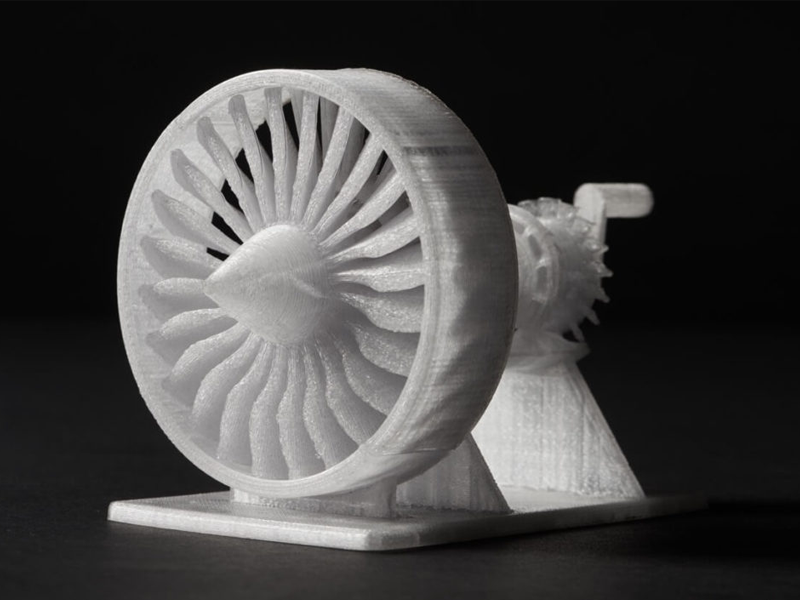Selective Laser Sintering (SLS) is a type of 3D printing technology that uses a laser to fuse together particles of plastic, metal, or other powdered materials to create a solid object. It is a popular choice for producing strong and mechanically functional parts, and it is often used for prototyping, small-batch production, and the manufacture of end-use parts.
In an SLS printer, a bed of powdered material is deposited in a layer on a build platform. The laser then traces out the cross-section of the part on the bed, sintering the material together in the desired shape. As each layer is completed, the build platform is lowered and a new layer of powder is deposited on top, with the process repeating until the part is complete. The unused powder serves as a support structure for the part, and it can be easily removed once the print is finished.
SLS printers are generally more expensive than other types of 3D printers, and the cost of materials can also be higher. However, they offer advantages in terms of the strength and mechanical properties of the printed parts, as well as the ability to print complex geometries and internal features. They are also well-suited to producing parts in a wide range of materials, including metals, ceramics, and some types of plastics.
Selective Laser Sintering (SLS) is a type of 3D printing technology that uses a laser to sinter powdered material into solid parts layer by layer. SLS has several benefits, including:
Wide range of materials: SLS can be used with a wide range of materials, including plastics, metals, and ceramics, allowing for a wide range of applications.
High strength and durability: SLS produces parts that are strong and durable, making them suitable for functional parts and end-use applications.
No support structures needed: SLS does not require the use of support structures, as the un-sintered powder supports the part during the build process. This can save time and material costs.
Fast production speeds: SLS has fast production speeds, making it suitable for high-volume production of parts.
Ability to produce complex geometries: SLS has the ability to produce complex geometries, including overhangs and internal features, without the need for support structures.
Overall, SLS is a good choice for those looking for a 3D printing technology that can produce strong, durable parts with a wide range of material options and the ability to produce complex geometries.
The cost of using Selective Laser Sintering (SLS) 3D printing technology can vary significantly depending on a number of factors, including:
Material: Different materials have different costs, and the cost of the material will be a significant factor in the overall cost of the parts.
Size and complexity of the parts: Larger and more complex parts will generally be more expensive to produce than smaller, simpler parts.
Quantity: The cost of producing parts using SLS tends to decrease as the quantity increases, so producing a large number of parts can result in a lower overall cost per part.
Post-processing: The cost of post-processing, such as cleaning and debinding, can also impact the overall cost of the parts.
Overall, the cost of producing parts using SLS will depend on the specific requirements of the project, and it is difficult to provide a general estimate without more information. It is generally advisable to obtain quotes from multiple 3D printing service providers to get a sense of the cost for your specific project.
Selective Laser Sintering (SLS) is a type of 3D printing technology that uses a laser to sinter powdered material into solid parts layer by layer. SLS can be used with a wide range of materials, including:
Plastics: SLS can be used with a variety of plastic powders, including nylon, polystyrene, and polypropylene.
Metals: SLS can be used with metal powders, such as aluminum, steel, and titanium, to produce metal parts with high strength and durability.
Ceramics: SLS can be used with ceramic powders to produce ceramic parts with high strength and durability.
Composites: SLS can be used with composite materials, such as glass-filled nylon, to produce parts with enhanced mechanical properties.
Overall, the choice of material for SLS will depend on the specific requirements of the application, including the desired strength, durability, and cost of the finished part.
Selective Laser Sintering (SLS) is a type of 3D printing technology that is widely used in a variety of industries, including:
Aerospace: SLS is used to produce lightweight and complex parts for aircraft and spacecraft, including engine components and structural components.
Automotive: SLS is used to produce a wide range of automotive parts, including engine components, transmission parts, and structural components.
Healthcare: SLS is used to produce custom medical implants, prosthetics, and other medical devices.
Consumer products: SLS is used to produce a wide range of consumer products, including electronics, toys, and sporting goods.
Defense: SLS is used to produce a variety of parts for military equipment, including aircraft and ground vehicles.
Overall, SLS is a versatile 3D printing technology that is widely used in a variety of industries due to its ability to produce strong, durable parts with a wide range of material options and the ability to produce complex geometries.
